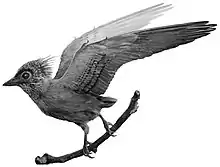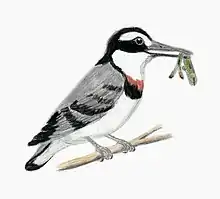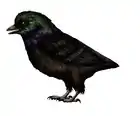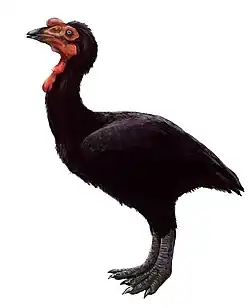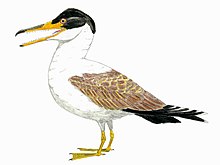Atrociraptor
Atrociraptor (meaning "savage thief"[1]) is a genus of saurornitholestine dromaeosaurid theropod dinosaur from the Late Cretaceous (Maastrichtian stage) of Alberta, Canada.
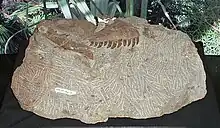
| Atrociraptor Temporal range: Late Cretaceous (Maastrichtian), | |
|---|---|
 | |
| Skeletal diagram showing known remains | |
| Scientific classification | |
| Domain: | Eukaryota |
| Kingdom: | Animalia |
| Phylum: | Chordata |
| Clade: | Dinosauria |
| Clade: | Saurischia |
| Clade: | Theropoda |
| Family: | †Dromaeosauridae |
| Clade: | †Eudromaeosauria |
| Subfamily: | †Saurornitholestinae |
| Genus: | †Atrociraptor Currie & Varricchio, 2004 |
| Species: | †A. marshalli |
| Binomial name | |
| †Atrociraptor marshalli Currie & Varricchio, 2004 | |
The type (and only) specimen of Atrociraptor, holotype RTMP 95.166.1, was discovered by Wayne Marshall in 1995, in layers of the Horseshoe Canyon Formation also containing an Albertosaurus bonebed, near Drumheller. This bonebed is located at the top of Unit 4 of the Horseshoe Canyon Formation,[2] which dates to about 68.5 million years ago.[3] The only known specimen consists of parts of the upper and lower jaws—both premaxillae, a right maxilla, both dentaries—teeth and numerous small fragments. The skull appears to have been unusually short and tall. The teeth are relatively straight, but they emerge from the tooth sockets at an angle to the jaw line, resulting in a strongly raked row of teeth. A number of isolated teeth (previously referred to Saurornitholestes) have also been recovered from the Horseshoe Canyon Formation;[4] they can be recognized by their unusually large serrations.
In 2004 Philip J. Currie and David Varricchio named and described the type species of Atrociraptor: Atrociraptor marshalli. The generic name is derived from the Latin atrox, "savage", and raptor, "seizer". The specific name honours Marshall.[1]
Atrociraptor was a relatively small dromaeosaur, measuring 2 m (6.6 ft) long and weighing 15 kg (33 lb).[5] It differs from Bambiraptor and other Dromaeosaurids in its more isodont dentition—the teeth have different sizes but the same form—and short deep snout. A skull opening, the maxillary fenestra, is relatively large and positioned right above another opening, the promaxillary fenestra, a condition not known from other species.
Atrociraptor was by its describers assigned to the Velociraptorinae within a larger Dromaeosauridae. However, in 2009 Currie published a cladistic analysis showing Atrociraptor to be a member of the Saurornitholestinae.[6] A 2022 study and analysis further vindicates this position and classifies Atrociraptor as a derived saurornitholestine, along with Acheroraptor.[7]
See also
References
- Currie, P. J. and D. J. Varricchio (2004). "A new dromaeosaurid from the Horseshoe Canyon Formation (Upper Cretaceous) of Alberta, Canada". Pp. 112–132 in P. J. Currie, E. B. Koppelhus, M. A. Shugar and J. L. Wright. (eds.), Feathered Dragons. Indianapolis: Indiana University Press.
- Larson, D. W., Brinkman, D. B., & Bell, P. R. (2010). Faunal assemblages from the upper Horseshoe Canyon Formation, an early Maastrichtian cool-climate assemblage from Alberta, with special reference to the Albertosaurus sarcophagus bonebed This article is one of a series of papers published in this Special Issue on the theme Albertosaurus. Canadian Journal of Earth Sciences, 47(9), 1159-1181.
- Arbour, Victoria (2010). "A Cretaceous armoury: Multiple ankylosaurid taxa in the Late Cretaceous of Alberta, Canada and Montana, USA". Journal of Vertebrate Paleontology. 30 (Supplement 2): 55A. doi:10.1080/02724634.2010.10411819. S2CID 220429286.
- Ryan, M. J., P. J. Currie, et al. (1998). "Baby hadrosaurid material associated with an unusually high abundance of Troodon teeth from the Horseshoe Canyon Formation, Upper Cretaceous, Alberta, Canada". Gaia 16: 123–133
- Paul, G.S., 2010, The Princeton Field Guide to Dinosaurs, Princeton University Press p. 136
- N.R. Longrich and P.J. Currie, 2009, "A microraptorine (Dinosauria-Dromaeosauridae) from the Late Cretaceous of North America". Proceedings of the National Academy of Sciences 106: 5002-5007
- Powers, Mark J.; Fabbri, Matteo; Doschak, Michael R.; Bhullar, Bhart-Anjan S.; Evans, David C.; Norell, Mark A.; Currie, Philip J. (2022). "A new hypothesis of eudromaeosaurian evolution: CT scans assist in testing and constructing morphological characters". Journal of Vertebrate Paleontology. 41 (5): e2010087. doi:10.1080/02724634.2021.2010087. S2CID 247039404.
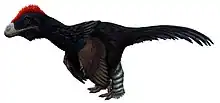
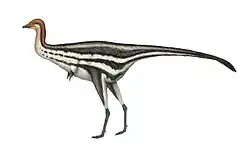
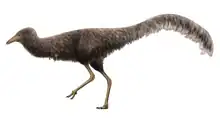


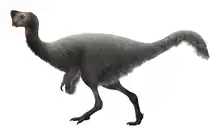
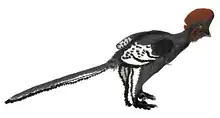


.png.webp)

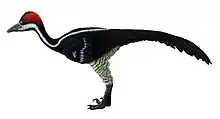
.jpg.webp)
